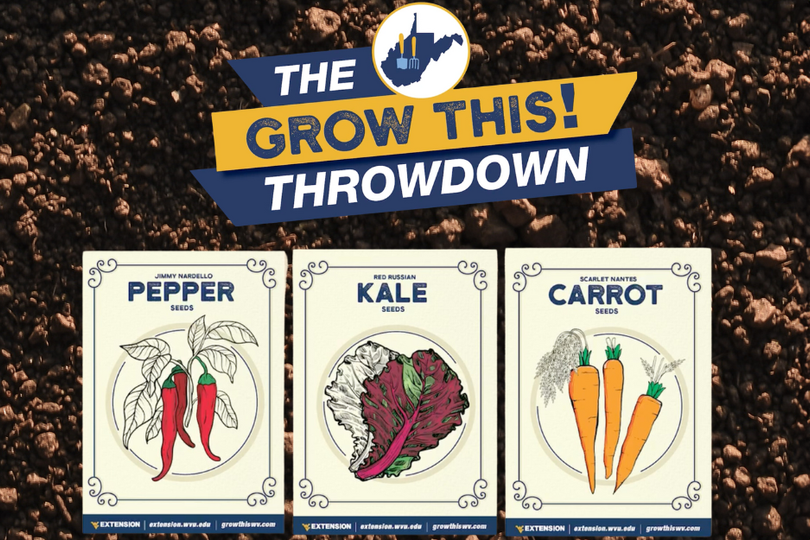West Virginia University Extension is again sending free seeds to West Virginians who fill out a short online survey, but the program has a new focus in 2024.
The “Grow This: West Virginia Garden Challenge” is a project of the WVU Extension Family Nutrition Program that aims to teach West Virginians how to grow their own food.
Zack Harold, the program’s multimedia specialist, said in 2023 the program provided seeds to more than 60,000 state residents. This year, the program is launching the “Grow This Throwdown,” a statewide competition that aims to get West Virginians to move more and build community around food.
“There was already a community around ‘Grow This,’ it was just an online community,” Harold said. “It’s trying to take that community and turn it into a real world thing so that people know their neighbors and can be part of a real-world initiative and help people.”
The “Throwdown” will be a county competition with challenges set throughout the year, ranging from sharing vegetables with your neighbor, or setting up a seed exchange, to more involved challenges like creating a seed or tool library.
“But if you complete those challenges, you earn points,” Harold said. “At the end of the season, we’ll compile all those points, and the counties with the most points will win grant money for community improvement projects.”
The only two requirements to qualify for “Grow This” are to live in West Virginia and to fill out the program survey. Harold said replies to prior years’ surveys, particularly responses around wanting more access to affordable produce, inspired this year’s Throwdown and its community centered challenges.
“We wanted to find a way to take the energy surrounding this and the passion that people have for this and use that to try to tackle the food insecurity issue in some small way,” he said. “It’s not going to solve food insecurity in West Virginia, but it’ll help in some small way. And it might open people’s eyes to the needs around them that they might not have seen before.”
This year’s “Grow This” crops of carrots, peppers and kale will be familiar to participants from last year. Harold said although the seeds will be new varieties of the same vegetables, participants should be more familiar with their requirements now.
“The idea was that people kind of had a practice round last year, they learned about the unique challenges that are involved in growing those particular vegetables, so they can do it better this year and have a more successful garden in addition to competing in these challenges,” Harold said.
Harold says signups fill up fast, but even those who don’t get the free seeds from the survey can participate in Throwdown challenges.
Editor’s note: Zack Harold also reports for the Inside Appalachia Folkways Project.
